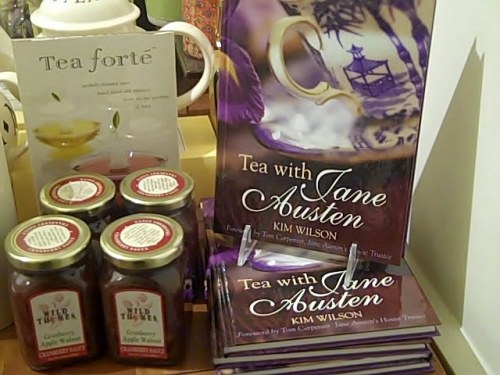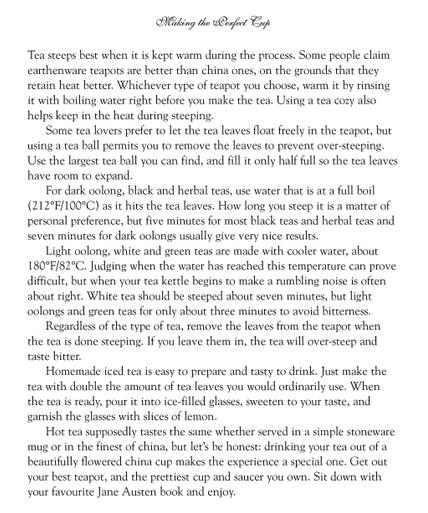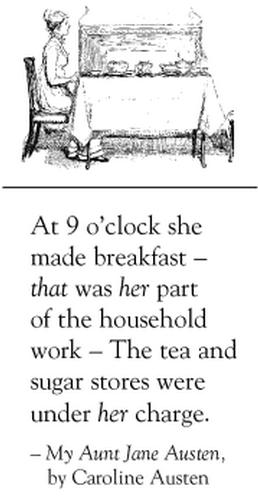If I had only read Kim Wilson’s Tea with Jane Austen many years ago, I would have saved myself a lot of trouble. Yes, gentle readers, I spent hours researching the history of tea and how and when people in the Regency era served it only to find that most of the information had already been gathered in this book.
Kim published her slim but informative book in 2004, two years before I began this blog. It is now in its second edition, and rightly so. The author has included almost all the facts and social customs about tea that a Regency romance author or Jane Austen fan or 18th- and 19th-century social historian could want.
I read this slim but fact-packed volume in two sittings the first time around, and have since read it twice more. Each time I have been DELIGHTED. Kim includes information about the Austens; a short history of tea; mealtimes and the hours they were taken by both simple folks and the gentry;
tea served in the home and outside of it; tea served in the morning and at a grand ball; the best way to prepare tea (or how the English do it); the health benefits of tea; shopping for tea; recipes for tea treats (including one for Mr. Woodhouse’s gruel!); and the difference between high tea and low tea (and why so many of us use the terms wrong).
If I have any fault to find with the book is that it’s too short. Thankfully, Kim Wilson also wrote In the Garden with Jane Austen, a book I shall review at a later time. I give Tea with Jane Austen five out of five china tea cups. Order the book here: Frances Lincoln, UK; and Amazon.com US
Binding: Hardback, 128 pages
ISBN: 9780711231894
Format: 215mm x 165mm
40 colour and 45 b/w illustrations
BIC Code: BGL, WBX
BISAC Code: BIO007000
Imprint: Frances Lincoln
More About Tea
- Would You Care for Weak Tea or Strong Tea? How the Dowager Countess Grantham Served Tea to Her Guests: Jane Austen’s World
- Bringing England Home: In Jane Austen’s England
- Start Your Tea Reference Library: four books by great ladies of tea
- Tea, Jane Austen, Social Order, and the American Revolution!
- Third Annual Jane Austen Festival: 2010
- Taking Tea With Jane Austen A Blend We Would Surely Enjoy












